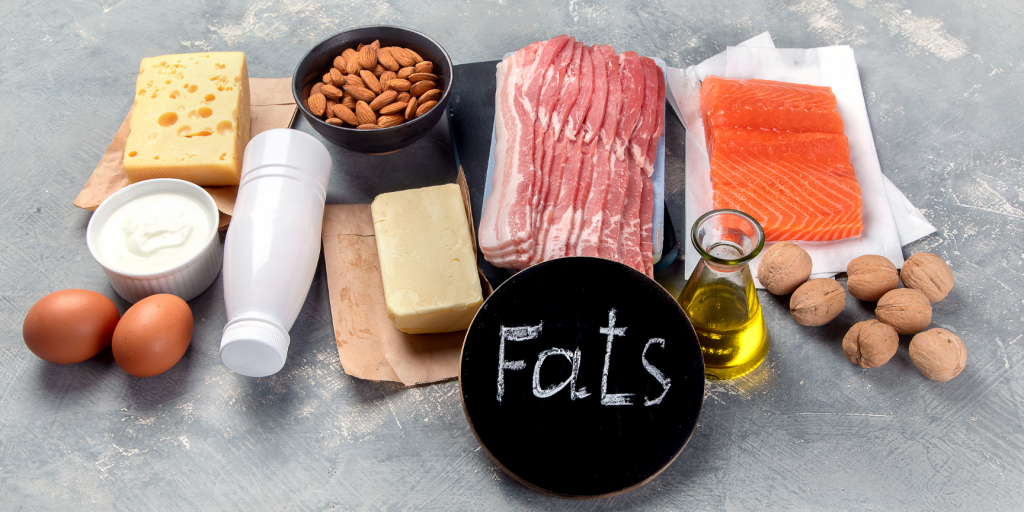Demystifying fat: How many calories are in a fat?

Understanding the caloric content of fats is crucial for anyone looking to manage their diet and overall health. Fats, often misunderstood and sometimes demonised, play an essential role in our bodies, providing energy, supporting cell growth, and protecting our organs. However, many people are left wondering, “how many calories are in a fat?” In this guide, we will break down the science behind fats and their caloric values, helping you make informed choices about your nutrition. Stay with us as we demystify the world of fats and uncover the truth behind their calorie content.
Understanding Fat and Calories
What is fat?
Fat is one of the three macronutrients essential for human health, alongside protein and carbohydrates. It is a type of lipid, a broad group of naturally occurring molecules that include fats, oils, and certain vitamins. Fats are composed of fatty acids and glycerol and are found in both plant and animal products. They serve several vital functions, such as providing a concentrated source of energy, aiding in the absorption of fat-soluble vitamins (A, D, E, K), and playing a crucial role in cell membrane structure. While fats are often associated with weight gain and cardiovascular issues, it is important to recognise that not all fats are created equal. There are healthy fats, like those found in avocados and nuts, which offer numerous health benefits, and unhealthy fats, like trans fats, which can be detrimental. Understanding these differences is key to making informed dietary choices.
Types of dietary fat
Dietary fats can be classified into several types, each with different effects on health. The main types are saturated fats, unsaturated fats, and trans fats. Saturated fats are typically solid at room temperature and found in animal products like meat and butter, as well as some plant oils like coconut oil. High intake of saturated fats has been linked to an increased risk of heart disease. Unsaturated fats, which are usually liquid at room temperature, include monounsaturated fats and polyunsaturated fats. These are found in foods like olive oil, avocados, nuts, and fish, and are considered beneficial for heart health. Lastly, trans fats are artificially created through a process called hydrogenation and are found in many processed foods. They are the most harmful type of fat, significantly increasing the risk of heart disease. Understanding these types enables better nutritional choices for overall health.
Role of fat in the body
Fat plays several crucial roles in the body, far beyond just being a source of energy. It provides insulation to help maintain body temperature and protects vital organs by acting as a cushion. Fat is also integral to cell membrane structure, ensuring proper cell function and signalling. Additionally, fats are essential for the absorption of fat-soluble vitamins (A, D, E, K), which are critical for various bodily functions, including vision, immune response, and blood clotting. Fat also serves as a reserve of energy, particularly useful during prolonged physical activity or periods of fasting. Moreover, certain fats are involved in producing hormones that regulate various physiological processes. Thus, while it is important to monitor fat intake, it is equally vital to ensure that your diet includes healthy fats to support these essential functions.
How many calories are in a fat?
Caloric value of fat
The caloric value of fat is a key factor in understanding its impact on your diet. Each gram of fat contains approximately 9 calories, making it the most calorie-dense macronutrient compared to protein and carbohydrates, which each provide about 4 calories per gram. This high energy density explains why even small amounts of fat can contribute significantly to your overall caloric intake. While fats are essential for various bodily functions, it is important to consume them in moderation to avoid excess calorie consumption, which can lead to weight gain. Balancing your diet to include healthy fats while limiting unhealthy fats can help maintain a healthy weight and support overall health. Knowing the caloric content of fats enables you to make informed dietary choices and manage your caloric intake effectively.
Comparing fat to protein and carbs
When comparing fat to protein and carbohydrates, the most prominent difference is in their caloric content. Fat is the most calorie-dense macronutrient, providing 9 calories per gram, while protein and carbohydrates each offer about 4 calories per gram. This means that fat can contribute more calories to your diet even in smaller amounts. However, each of these macronutrients plays unique roles in the body. Proteins are essential for building and repairing tissues, producing enzymes and hormones, and supporting immune function. Carbohydrates are the body’s primary source of energy, especially for the brain and during high-intensity activities. While fats are more calorie-dense, they provide long-lasting energy and are crucial for absorbing fat-soluble vitamins. Understanding these differences helps in creating a balanced diet that leverages the benefits of each macronutrient while maintaining a healthy caloric intake.
Real-world examples
To put the caloric content of fat into perspective, consider some common foods. A tablespoon of olive oil, for instance, contains about 14 grams of fat, equating to roughly 126 calories. Similarly, an avocado has around 21 grams of fat, translating to about 189 calories. On the other hand, a small handful of almonds (approximately 23 almonds) contains about 14 grams of fat, providing around 126 calories. These examples illustrate how quickly calories can add up when consuming fat-rich foods. While these foods are healthy and provide beneficial nutrients, it’s important to be mindful of portion sizes. Conversely, processed foods like a single doughnut can contain up to 15 grams of fat, adding approximately 135 calories, often from less healthy fat sources. Being aware of these real-world examples helps in making more informed dietary choices and managing your caloric intake effectively.
The importance of fat in your diet
Essential nutrients in fat
Fats are not just calorie providers; they also carry essential nutrients that are crucial for health. One of the most important groups of nutrients found in fats are the fat-soluble vitamins: A, D, E, and K. These vitamins are vital for various bodily functions, such as vision, bone health, and blood clotting. Fats also contain essential fatty acids, such as omega-3 and omega-6, which the body cannot produce on its own. Omega-3 fatty acids are known for their anti-inflammatory properties and benefits for heart health, while omega-6 fatty acids play a role in brain function and normal growth and development. Additionally, fats help in the formation of cell membranes and the sheaths surrounding nerves, ensuring proper cell function and communication. Including healthy fats in your diet ensures you receive these essential nutrients, supporting overall wellbeing.
Benefits of healthy fats
Incorporating healthy fats into your diet offers numerous benefits that extend beyond basic nutrition. Healthy fats, such as those found in avocados, nuts, seeds, and fish, contribute to heart health by helping to lower bad cholesterol levels and increasing good cholesterol levels. These fats also have anti-inflammatory properties, which can reduce the risk of chronic diseases like arthritis and heart disease. Additionally, healthy fats play a crucial role in brain health, supporting cognitive function and potentially reducing the risk of neurodegenerative conditions like Alzheimer’s disease. They also enhance the absorption of fat-soluble vitamins, ensuring your body gets the most out of the nutrients you consume. Moreover, healthy fats can contribute to satiety, helping you feel full longer and aiding in weight management. Including sources of healthy fats in your diet can lead to improved overall health and wellbeing.
Myths about fat consumption
Despite the essential role fats play in our diet, numerous myths about fat consumption persist. One common myth is that all fats are bad and should be avoided to maintain a healthy weight. In reality, not all fats are created equal. While trans fats and excessive saturated fats can be harmful, unsaturated fats are beneficial and necessary for good health. Another myth is that eating fat will make you fat. While fats are calorie-dense, consuming them in moderation as part of a balanced diet will not necessarily lead to weight gain and can actually help with satiety, reducing overall calorie intake. There is also the misconception that low-fat diets are inherently healthier. Eliminating fats altogether can deprive the body of essential nutrients and lead to imbalances. Understanding these myths can help you make more informed and healthier dietary choices that include the right kinds of fats.
Managing fat intake
How to read food labels
Reading food labels is a crucial skill for managing fat intake effectively. Start by checking the total fat content, usually listed per serving. This will help you understand how much fat you are consuming. Next, look at the breakdown of different types of fats: saturated, trans, and unsaturated fats. Aim to limit saturated and trans fats, as these are less healthy, and favour unsaturated fats. Pay attention to the serving size to ensure you are not consuming more fat than intended. Additionally, check for any hidden fats in the ingredient list, such as hydrogenated oils, which indicate the presence of trans fats. Labels also often provide the percentage of daily value (%DV), helping you gauge how a serving fits into your daily dietary needs. By understanding these elements, you can make more informed choices and better manage your fat intake for a balanced diet.
Healthy vs. unhealthy fats
Distinguishing between healthy and unhealthy fats is key to managing fat intake and maintaining good health. Healthy fats, such as monounsaturated and polyunsaturated fats, are found in foods like avocados, nuts, seeds, and oily fish. These fats can improve heart health, reduce inflammation, and support brain function. On the other hand, unhealthy fats include saturated and trans fats. Saturated fats, found in animal products like meat and dairy, as well as certain plant oils like coconut oil, should be consumed in moderation. Trans fats, often found in processed foods, baked goods, and margarine, are the most harmful and should be avoided whenever possible. These fats can raise bad cholesterol levels and increase the risk of heart disease. By focusing on incorporating healthy fats into your diet and limiting unhealthy fats, you can better manage your overall fat intake and support long-term health.
Tips for balanced eating
Achieving balanced eating requires mindful choices and a focus on variety. Start by incorporating a mix of macronutrients—proteins, carbohydrates, and healthy fats—into each meal. Prioritise whole foods like fruits, vegetables, whole grains, lean proteins, and healthy fat sources such as avocados, nuts, and olive oil. Limit processed foods and those high in unhealthy fats, sugars, and salt. Practising portion control is also essential; use smaller plates and listen to your body’s hunger cues to avoid overeating. Plan your meals and snacks ahead of time to ensure they are balanced and nutritious. Additionally, stay hydrated by drinking plenty of water throughout the day. Finally, read food labels to make informed choices about what you are consuming. By following these tips, you can create a balanced eating pattern that supports your health and well-being.
Conclusion and practical advice
Key takeaways
Understanding the caloric content and role of fats in your diet is essential for maintaining overall health. Fats are the most calorie-dense macronutrient, providing 9 calories per gram, but they are also crucial for various bodily functions, including energy storage, cell structure, and nutrient absorption. Not all fats are created equal; unsaturated fats are beneficial, while saturated and trans fats should be limited. Reading food labels can help you manage your fat intake by identifying the types and amounts of fat in foods. Incorporating tips for balanced eating, such as prioritising whole foods and practising portion control, can further support a healthy diet. By being mindful of the fats you consume and making informed dietary choices, you can enjoy the benefits of healthy fats while minimising the risks associated with unhealthy fats.
Steps to a healthier diet
Transitioning to a healthier diet involves simple, actionable steps that can make a significant difference. Begin by incorporating more whole foods, such as fruits, vegetables, whole grains, and lean proteins, into your meals. Gradually reduce your intake of processed foods, which often contain unhealthy fats and added sugars. Focus on including healthy fats, like those found in avocados, nuts, and olive oil, while limiting saturated and trans fats. Practise mindful eating by paying attention to portion sizes and eating slowly to better recognise your body’s hunger and fullness signals. Plan and prepare your meals in advance to ensure they are balanced and nutritious. Stay hydrated by drinking plenty of water throughout the day. Lastly, read food labels to make informed choices about the nutritional content of the foods you consume. By following these steps, you can create a sustainable and healthier eating pattern that supports your overall well-being.
Final Thoughts
Understanding the role and caloric content of fats in your diet is a vital step towards achieving a balanced and healthy lifestyle. Fats are essential for various bodily functions, but it is important to differentiate between healthy and unhealthy types. Incorporating healthy fats while limiting saturated and trans fats can significantly impact your overall health. Reading food labels and practising mindful eating are practical ways to manage your fat intake. Remember, a balanced diet is not about eliminating any one group but about making informed choices that support your body’s needs. By taking small, consistent steps towards healthier eating habits, you can enjoy the benefits of a well-rounded diet without feeling deprived. Ultimately, the key to a healthy diet is balance, variety, and moderation. Keep these principles in mind, and you’ll be well on your way to better health and well-being.
Fitatu® app
Download the app from the Google Play Store or Apple Store and start tracking your macros with us!
Prefer the web version? No problem. A basic web version is available for our subscribers.
What else is included in Fitatu® Premium?
- over 2000 recipes, plus dozens of new ones every month,
- additional intermittent fasting plans,
- the ability to create shopping lists,
- 7 ready-made meal plans,
- filtering products and recipes,
- more sync options with fitness apps,
- access to the web version of the app,
- no ads!
Fitatu Support Group
Join our Facebook community! Discover inspiring recipes daily, receive support from other healthy eating enthusiasts, and benefit from professional dietitian advice from Fitatu. Get inspired and take care of your health in the best company!











